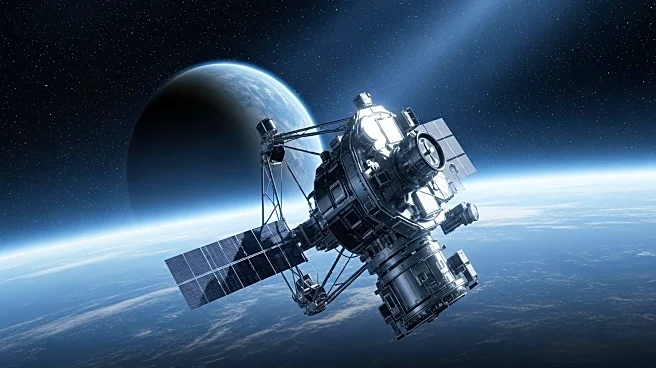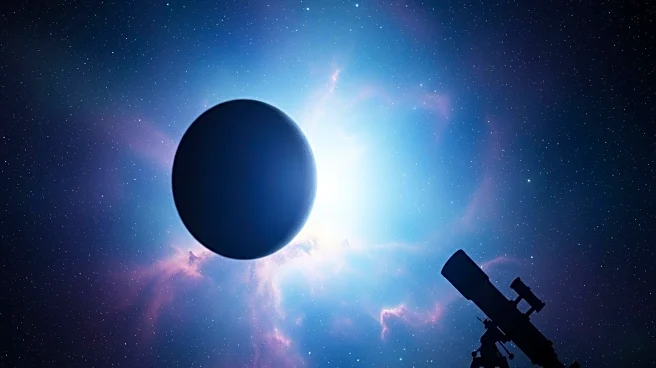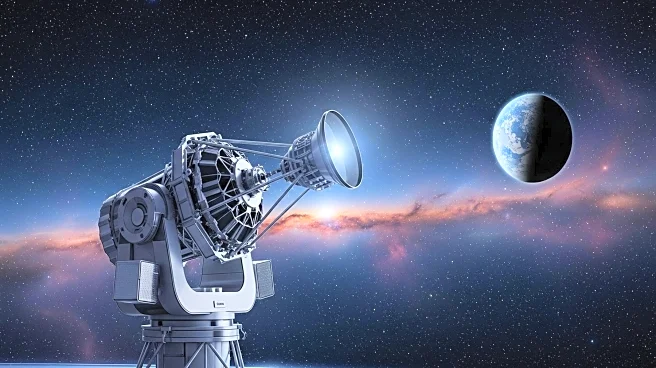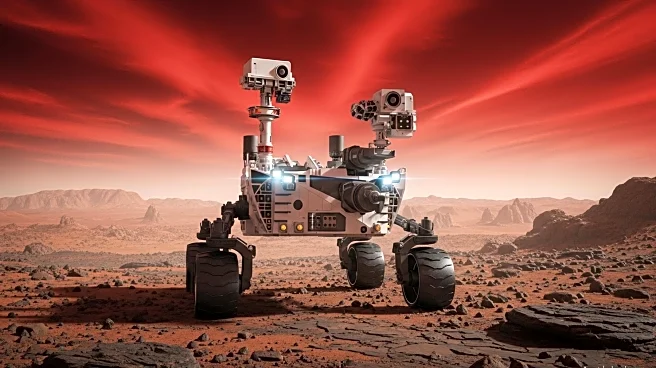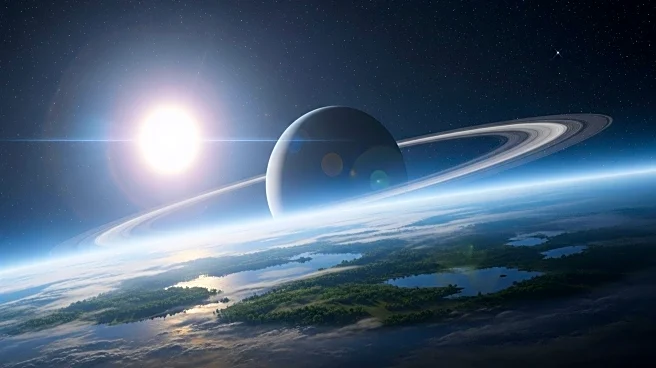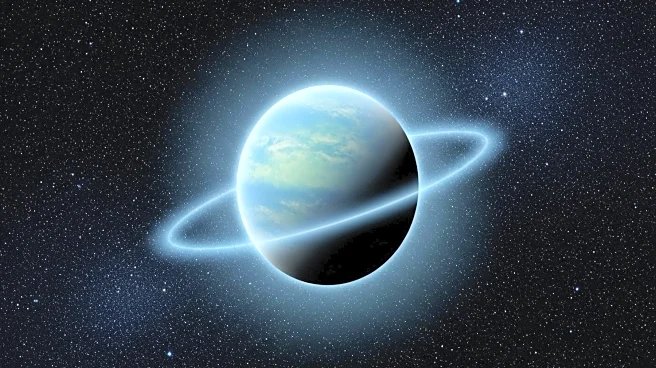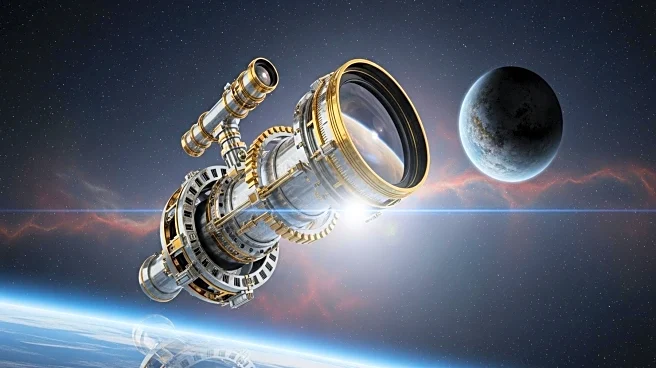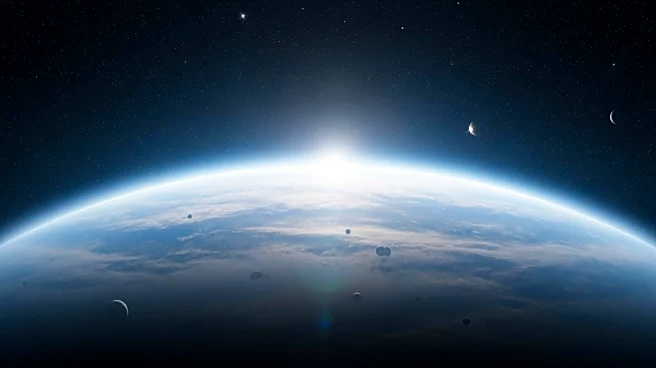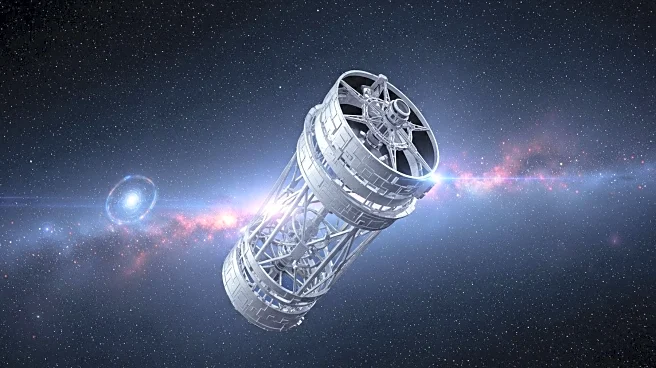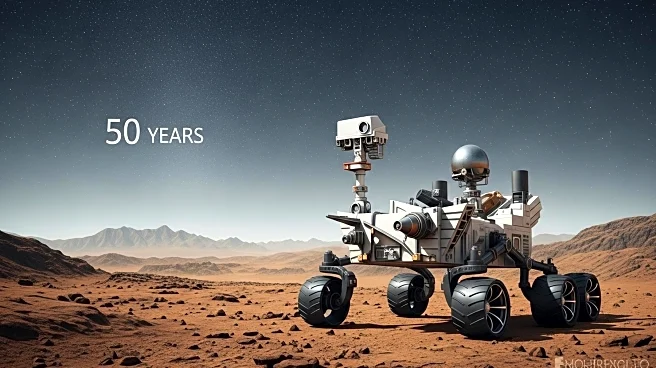What's Happening?
NASA's James Webb Space Telescope has provided new insights into the TRAPPIST-1 system, particularly focusing on the exoplanet TRAPPIST-1e. Recent studies suggest that this Earth-sized planet, located 40 light-years away, may possess a nitrogen-rich atmosphere, raising the possibility of liquid water on its surface. This discovery is significant as it could indicate conditions suitable for supporting life. The research, published in the Astrophysical Journal Letters, involved observing four transits of TRAPPIST-1e, where the planet passed in front of its star. The observations did not directly detect an atmosphere but suggested its potential presence through light absorption patterns. The TRAPPIST-1 system, discovered in 2016, has been a focal point for astronomers due to its potential to host life-supporting conditions.
Why It's Important?
The potential discovery of an atmosphere on TRAPPIST-1e is a crucial step in the search for extraterrestrial life. An atmosphere is essential for maintaining liquid water, a key ingredient for life as we know it. If confirmed, this finding could significantly impact our understanding of habitable conditions beyond Earth, influencing future astronomical research and exploration missions. The presence of a nitrogen-rich atmosphere, similar to Earth's, could suggest that TRAPPIST-1e has conditions conducive to life, making it a prime candidate for further study. This research also highlights the capabilities of the James Webb Space Telescope in advancing our knowledge of distant exoplanets.
What's Next?
Further observations are planned to confirm the presence of an atmosphere on TRAPPIST-1e. Scientists aim to conduct 15 more transits in the coming years to gather more data. Additionally, studies on other planets within the TRAPPIST-1 system, such as TRAPPIST-1f, TRAPPIST-1g, and TRAPPIST-1h, are forthcoming. These efforts will help refine our understanding of the system's potential to support life and contribute to the broader search for habitable exoplanets.
